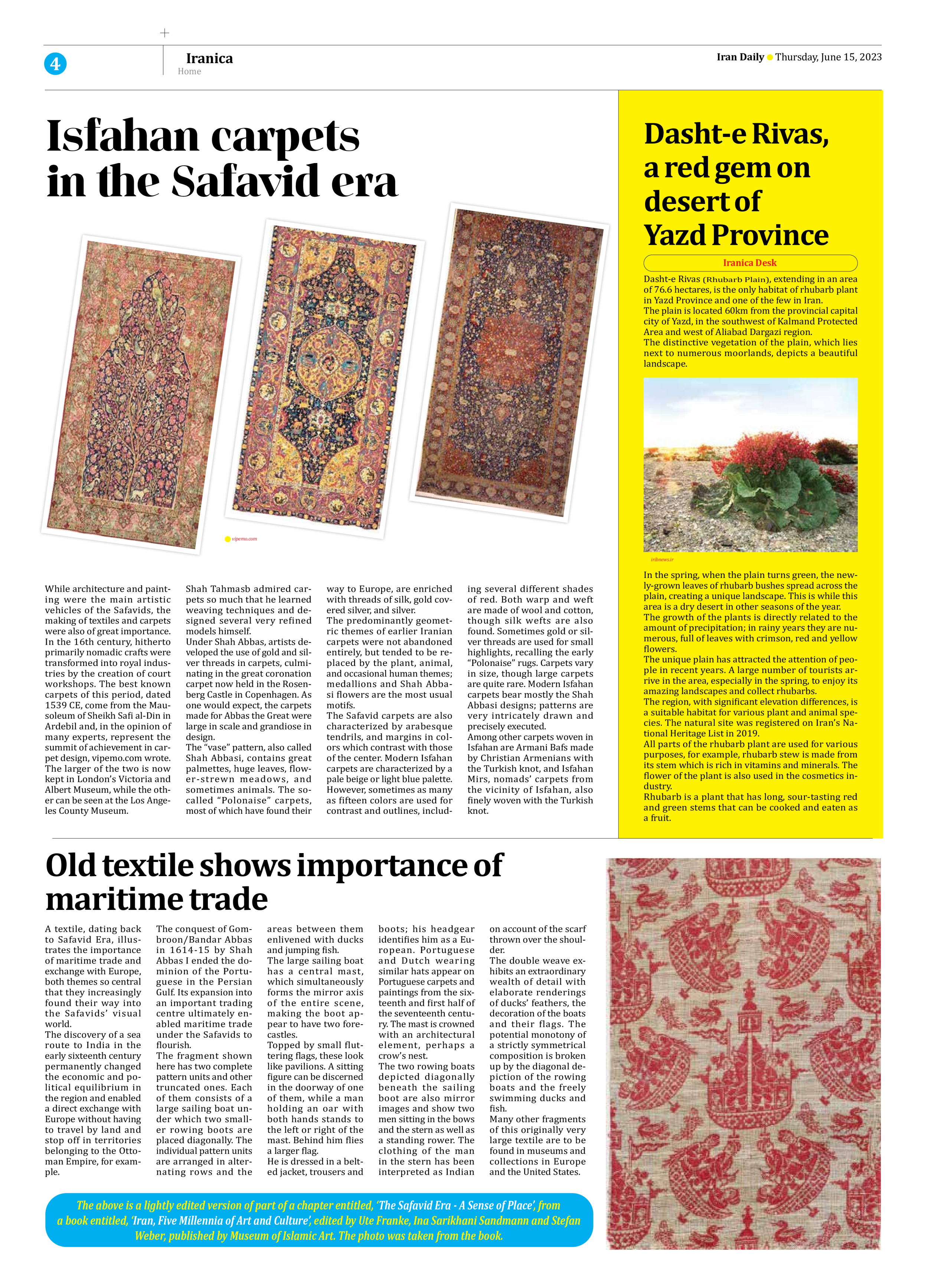
Old textile shows importance of maritime trade
A textile, dating back to Safavid Era, illustrates the importance of maritime trade and exchange with Europe, both themes so central that they increasingly found their way into the Safavids’ visual world.
The discovery of a sea route to India in the early sixteenth century permanently changed the economic and political equilibrium in the region and enabled a direct exchange with Europe without having to travel by land and stop off in territories belonging to the Ottoman Empire, for example.
The conquest of Gombroon/Bandar Abbas in 1614-15 by Shah Abbas I ended the dominion of the Portuguese in the Persian Gulf. Its expansion into an important trading centre ultimately enabled maritime trade under the Safavids to flourish.
The fragment shown here has two complete pattern units and other truncated ones. Each of them consists of a large sailing boat under which two smaller rowing boots are placed diagonally. The individual pattern units are arranged in alternating rows and the areas between them enlivened with ducks and jumping fish.
The large sailing boat has a central mast, which simultaneously forms the mirror axis of the entire scene, making the boot appear to have two forecastles.
Topped by small fluttering flags, these look like pavilions. A sitting figure can be discerned in the doorway of one of them, while a man holding an oar with both hands stands to the left or right of the mast. Behind him flies a larger flag.
He is dressed in a belted jacket, trousers and boots; his headgear identifies him as a European. Portuguese and Dutch wearing similar hats appear on Portuguese carpets and paintings from the sixteenth and first half of the seventeenth century. The mast is crowned with an architectural element, perhaps a crow’s nest.
The two rowing boats depicted diagonally beneath the sailing boot are also mirror images and show two men sitting in the bows and the stern as well as a standing rower. The clothing of the man in the stern has been interpreted as Indian on account of the scarf thrown over the shoulder.
The double weave exhibits an extraordinary wealth of detail with elaborate renderings of ducks’ feathers, the decoration of the boats and their flags. The potential monotony of a strictly symmetrical composition is broken up by the diagonal depiction of the rowing boats and the freely swimming ducks and fish.
Many other fragments of this originally very large textile are to be found in museums and collections in Europe and the United States.
The above is a lightly edited version of part of a chapter entitled, ‘The Safavid Era - A Sense of Place’, from a book entitled, ‘Iran, Five Millennia of Art and Culture’, edited by Ute Franke, Ina Sarikhani Sandmann and Stefan Weber, published by Museum of Islamic Art. The photo was taken from the book.







